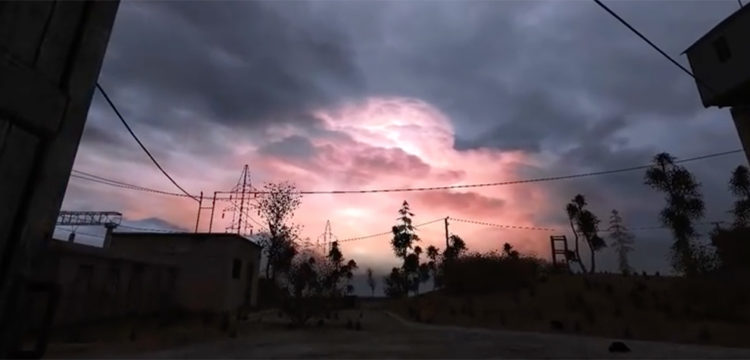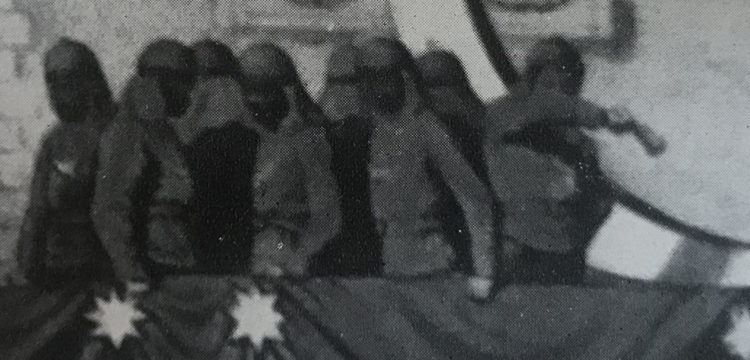Hearing like a Nymph
A listening session and insights on the sound behind the mask
Polia is the new project of Carola Bonfili specifically conceived for the space of the Fondazione Baruchello at Via del Vascello, curated by Carla Subrizi. The project is inspired by the book Hypnerotomachia Poliphili (1499), which describes the erotic dream of the protagonist, Poliphilo, as an initiatory journey to find his beloved woman, metaphor of an interior transformation in search of platonic love. More than the narrative character of the book, Carola Bonfili’s interest lied in the ambiguous and polymorphic nature of his xylographies, which illustrate the passages of Poliphilo’s dream and suggest different narrations and possible events in the same depiction. The allegory of time becomes a central aspect of the work which alludes to suspended and anachronistic temporalities. The soundtrack and the audio project of the video Polia are by Francesco Fonassi, here talking with anthropologist Irene Bianchetti on the making of (translated from Italian by Ryan Worth).
Irene Bianchetti: In Greek, Polia means “multitude.” The woman loved by Poliphilo (literally “the one who loves many things”) is a figure who beholds complexity and difference within herself, combining multiple visions and individuality. In the video Polia is embodied by three female figures, the Nymphs. Through the same face and the same voice, the Nymphs split unity into a triad and reunite the triad into unity, precisely because they are the same person. Starting from this image, we begin to understand how Carola constructed her work, intertwining references from different cultures, reinterpreting and modifying them, connecting them in order to create a more personal narrative that would follow the trace of her own research. This approach could be defined as holistic, since it is multi-signific, oriented to unite different levels of discourse and different references as a new whole, which acquires greater significance with respect to the simple sum of its parts because of its unusual form. An approach that seems to characterize both the musical selection you made for the Fondazione Baruchello, as well as for the arrangement of the video soundtrack in which various contrasting elements emerge in a non-univocal style.
Francesco Fonassi: A holistic approach to signs is a good way to describe the methodology that brought me and Carola to work together. After the making of the soundtrack for the film and the foundation’s invitation to formulate an idea for a live event during the exhibition, I’ve decided to focus on Gianfranco Baruchello’s private record library: a careful selection of about fifty records emerged from following the same principles. By (re)discovering these records left unheard for years, I got the chance to better know Gianfranco through his personal relationship to music: from sound poetry to first editions of historical labels, from rare recordings of popular and resistance songs to sea and mountains’ soundscapes, but also a collection of ritual and folk instruments, some Arabic music, educational editions, sound effects for cinema, and so on. The work I am doing now is to work with the records and in each occasion I approach the collection differently with live sampling, dubbing, overlapping, and breaks. At the beginning of our conversation we listened to three tracks: a group of dogs near the magnetic pole in the Canadian arctic howling at the moon, a piece by Violeta Parra titled Qué vamos a hacer, here in a modified version where I dubbed the voice turning the pitch a fifth lower in such a way that it sounds like a male voice is singing along (I wanted to have her duet with Gilbert Favre, her partner and partly the cause of her depression that eventually lead to suicide). Then, a track from an edition of Chants de marins bringing together songs by French sailors from early 1900s.
FF: While composing the soundtrack for Polia I have started collecting materials, signs and figures of sound that differ quite a lot in terms of style—indeed. Actually the first hunting scene has inspired the whole work, and triggered me to compose a series of leading tracks the soundtrack was adapted from: the sound piece was born as a composition in three-channels, as an autonomous sonic environment meant to build some tension, and as the psychic listening within impure electronic landscapes, signals of presence and alarm. The bow, for example, functions an important reference for the entire composition. Many choices were called into question by the adaptation to this material to the visual material, according to the process developed by you and Carola. For instance, I would like to underline the way in which you’ve constructed the essential choreography of the second scene, in order to occupy some trajectories of the visual field.
IB: The choreography we developed for the second scene was born from Carola’s suggestion to take inspiration from both the traditional Japanese dances performed by geishas, and contemporary choreographies from which we have extrapolated some sequences or isolated movements, reinterpreting and reassembling them together. With the image of the geishas, we shared the expressive fixity of the face as well as a certain similarity in dress. What came out of this is a dance composed of minute, measured, and essential gestures in which the movement’s coordination is fundamental as well as the performers’ synchronization. Your ability to see and feel what’s around you from inside the mask is very limited, and one of the only ways we were able to orient ourselves and pace our movement was by counting. In short, the costumes have imposed considerable limitations on movement that have then determined our final actions. And you, how did you proceed in taking decisions on sound?
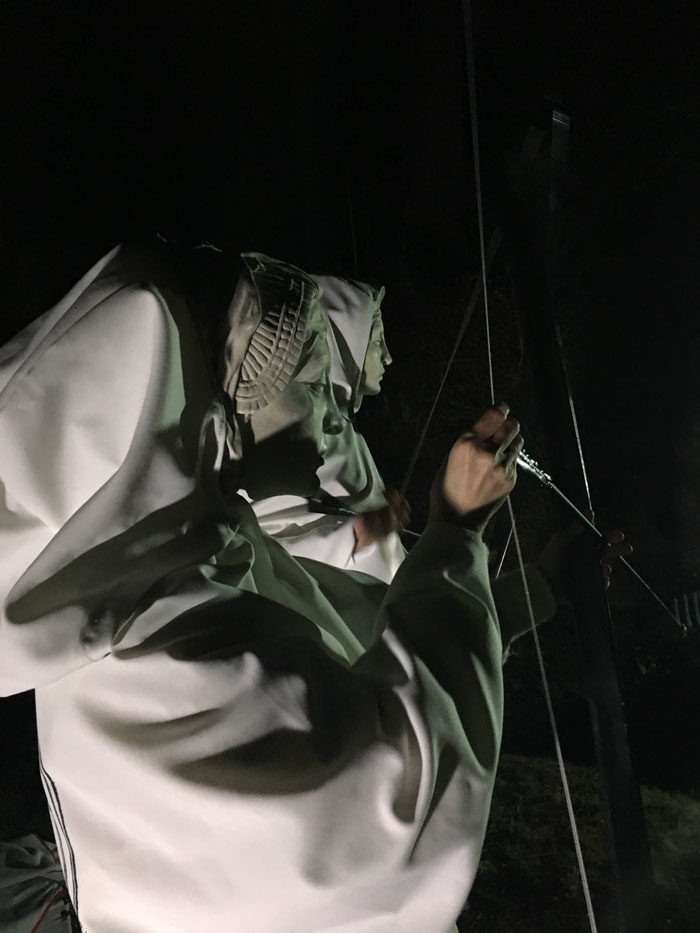
Carola Bonfili. Polia, backstage. 2019
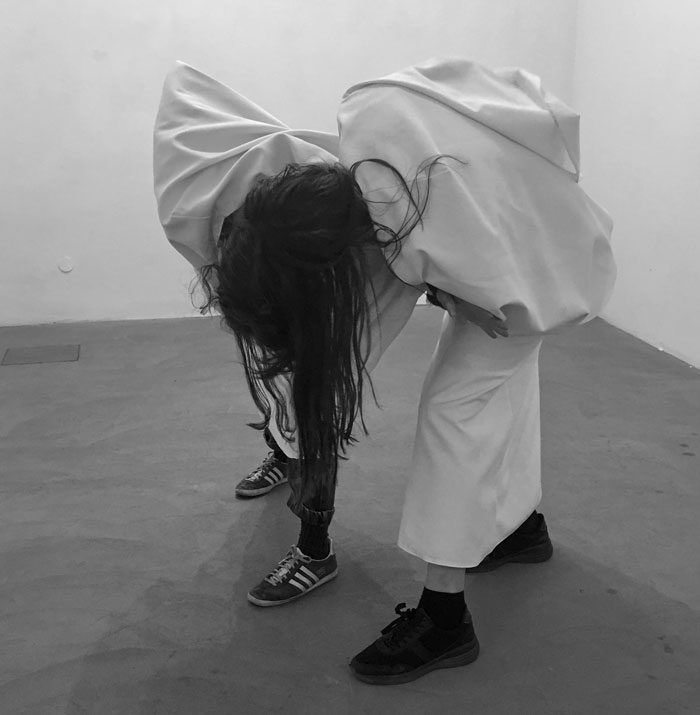
Carola Bonfili. Polia, backstage. 2019
FF: The audio space accompanying this ”dance” was formed by subtraction: I had in mind an ascending canon composed through the Shepard scales (as used by Bach or Ligeti, to cite the most prominent examples) according to which an apparent static effect is obtained in the repetition of the various voices while in reality the scale grows higher at each take. This three-part canon was performed by a single voice (Letizia Fiorenza) to push on the ambiguity at the core of the work. Precisely “Polia.” The duration of the scales was meant to be the same for the entire scene. Later on e realized that the density and the charge of the recordings (eventually processed on tape and marked by a very dry touch of electronics) would have overwhelmed the space, obfuscate the dance, almost interfering with the lightness of those trajectories.
IB: When this scene was filmed you also tracked and recorded the sound of our movements in space.
FF: It was difficult to make good recordings during shooting and, paradoxically, this lack of live recorded material—of which only one repetition of the multi-channel choreography was useful—led to a more essential and—according to me—more effective use of diegetic sounds used in the video.
Your leap, a series of recorded or simulated gestures, rustlings and steps, all emerge from a line of essential electronic sounds and rhythmic melodic cadences, slightly delayed from your movements. Nothing is left of the canon but a fragment, which prepares and highlights the most emblematic sequence, the moment when a nymph is taking off the hood, revealing her double face for the first time. From there emptiness—and its resonance take hold and until the end of the scene, in a perceptible change of state, both audiovisual and psychological. I think it is the voice itself that makes this crossover possible.
IB: This state of incubation of desire, it then manifests itself fully in the next scene. The heads of the nymphs are two-faced like those of the Janus, the Roman god of beginnings, the guardian of the threshold, capable of seeing both forward and backward—the past and the future, presiding over space and time. When this duplicity is revealed, the threshold is crossed and we are lead to another dimension.
FF: With the beginning of the third scene low and deaf beats open up to a resonant, progressive, and mental rhythmic sequence. My attempt was to give a glimpse of the inner mental sounds playing in the head, behind the mask. It is that kind of double game between the recording of an event and the representation of the event itself, between the truth we are observing and its obsessive side.
IB: From what you can tell, what was the origin of this soundtrack?
FF: Personally, I have a strong interest in psychological acoustics I share with the people I work with as well as the people I find myself living and generating shared conditions with. I experiment with different methods because of our shared interest in the psychological relationships of listening, its hierarchies and deviations. The tracks “in red” I have played are influenced by these thoughts and experiences, and perhaps, because you were nymphs and I wanted to share with you a specific side of these interests. Following closely the various stages in the creation of Carola’s work I developed a precise conceptualization of your role. I thought of the sentinels who guarded those places of fiction in ruins, similar in their movements and attitudes, but volatile in their own temporality. The ceaseless sequence is generated by observing the exposed bodies and even the intimate rites you two have recomposed, as an identical body, you both have isolated yourself and renounced your ability to hear.
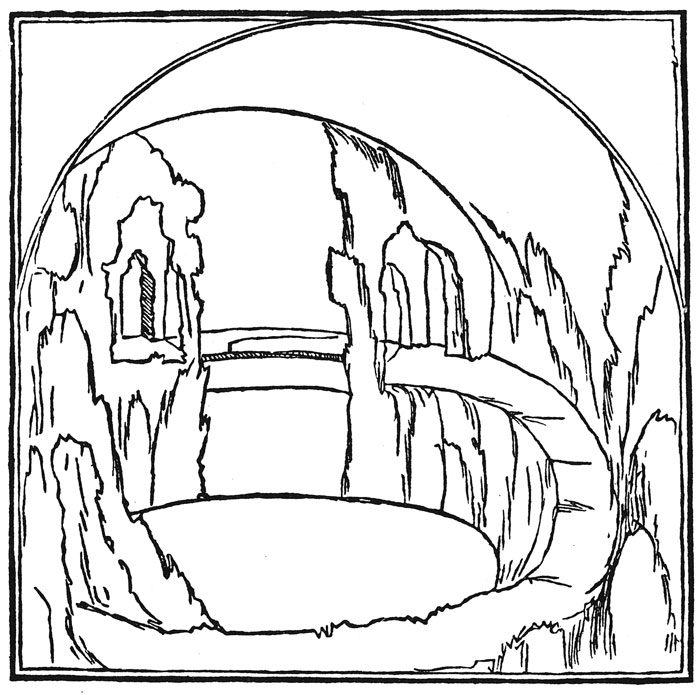
Francesco Colonna. Hypnerotomachia Poliphily, xylography, ed. Adelphi, 2018
IB: It is interesting to see the contrast you speak about, between the exposure of our naked and exhibited body, and the acoustic isolation where we have been immersed into: a condition, as I mentioned before, that accompanied us throughout the entire process of shooting but has become almost deafening in this scene. Behind the masks we could practically only hear our amplified and frequent breathing, becoming stronger and stronger, more and more wheezy. The visual and auditory isolation generated by the mask makes you retreat into your personal intimacy, makes you feel more lonely. In contrast with the chance of an encounter, in a scene where what we were looking for was actually physical contact, in the fusion of bodies. While wearing the mask, you experience a strong sense of detachment from yourself, growing in some sort of depersonalized feeling, as if you would wear someone else’s body. As Canetti wrote in Massa e Potere, the mask is the final result of the process of a continuous metamorphosis the human face is an expression of; it is delimited, constant, clear and precise inasmuch as a rigid figure that creates a certain distance from the observer. The static and impenetrable character of the mask makes it distant and mysterious. It can be approached, looked at, but will never reveal its secret. It keeps itself concealed with a content that could be dangerous and does not allow the viewer to ever become familiar. It shields, an impenetrable threshold between the inside and the outside. We felt protected by this barrier although we were undressed and exposed to the eye, strengthened by this unbridgeable distance from the spectator.
Through making the sound of this scene you have placed yourself on our side of the mask, in an attempt to portray a sort of inner drive that grows in intensity: the rhythm becomes more and more pedantic, just as the tension grows in regard to the contact we went for through the new body of the nymph. A tension that remains mostly unresolved, if not impeded. Your track has a dark, sensual, subterranean, almost claustrophobic taste and gives the idea of a closed environment, almost decaying. It foreshadows the destruction that characterizes the place in which the following scene unfolds.
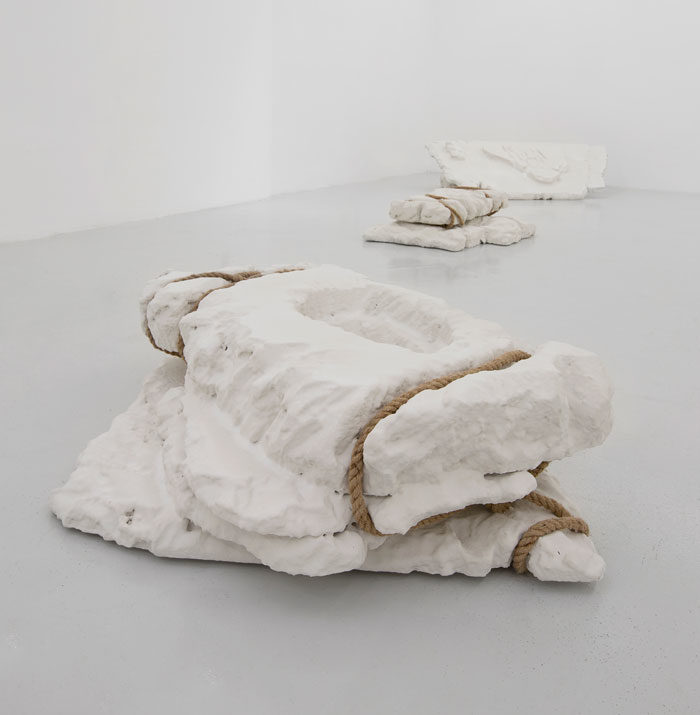
Carola Bonfili. Body/heads, variable dimensions, cement, polystyrene, rope. 2019. Photo Alessia Calzecchi
FF: The two audio fragments above, especially Body / Head, dramatically follows the last sequence of the first scene where the prey is caught in a bag and tied. The second one is instead a fragment eventually discarded from the final mix and is composed of recordings done in the Val Saviore forest in Val Camonica, where the last scene was filmed. They are recordings in proximity: carried out on trunks and broken splinters of some of the hundreds of trees which collapsed last autumn due to the atmospheric events (a phenomenon similar to what occurred on a larger scale in a valley of the Dolomites in the Veneto region). Both fragments have a very detailed and overbearing “cranial” character, at times percussive. It was my intention to mark both outdoor scenes with a progressive reach to these human actions, such as tying, and the natural ones, as for the tree’s collapse. I wanted to insist on the alienating effect given by the images where, especially in the last scene, the nymphs appear as ethereal and foreign to the natural catastrophe surrounding them, in order to force and emphasize the sublime and romantic image we gaze at. Instead of penetrating the material and focusing on this somewhat frozen, potent rupture, we finally opted for a certain lightness and a more ambient vibe.
IB: The sound pattern you have chosen here in the closing scene is indeed more relaxing. It also accompanies the exploration of this open space and its collapse, this time by remaining out of it and offering an overall vision.
The setting is a centenary forest that has been leveled by an exceptional wind force during a storm. It is a place I am fond of, which has always been familiar to me and has now lost all its connotations. Its reference points have changed. When crossing it one is disturbed by perceiving the annihilating power of nature and after such a violent upheaval one has the feeling that even time has stopped, thereby suspending the course of all forms of life. In reality it is never as such, as nature keeps on regenerating itself in a strong and silent way, and the nymphs know it.


